Waiting at the Aeroflot terminal in Riga, Latvia, we were becoming increasingly amused by the antics of a backpacker at the next gate. Two pretty girls were waiting to board the plane to Tashkent in Kazakhstan. It seemed that the young man had befriended them, and had suddenly bought a ticket to join them on their plane. It is technically possible to travel without a visa in the Baltic states if you have a letter of invitation from a local hotel or tour operator, but clearly he didn’t have one. I imagine that it would be possible to sort this out, perhaps by quietly greasing the wheels of commerce, but he wasn’t getting very far by declaiming wildly, “I don’t need a visa, because I am French!”
We had both visas and letters, so we left him to it and boarded our plane to Moscow. On our arrival, we emerged into the scrum of sign-wielding drivers and suddenly realised that we couldn’t be sure to recognise our name in Cyrillic. Eventually we established that none of them were waiting for us, but then a late arrival came hurrying up with a board carrying our names in Latin script.
Our transport wasn’t exactly a limo, in fact we climbed up into the front of a delivery van full of crates of vegetables. Several things immediately became clear. Firstly, there was something seriously wrong with the transmission, resulting in a serious rumbling vibration at speed. Secondly, we heard the rumble all the time because our driver went completely flat-out, treating all other traffic like obstacles in a video game, passing on one side or the other and using all of the available road, including both hard shoulders, exit ramps and lane dividers. We looked in vain for seat belts as the driver squeezed the big truck into spaces that wouldn’t accommodate a motorcycle.
The other drivers apparently regarded this behaviour with complete equanimity, without a hint of squealing tyres or honking horns. However, I only saw one other vehicle driving in a similar manner, and that was a taxi that incredibly managed to weave in front of us on one of the hard shoulders.
Eventually we arrived at a securely guarded gate and were decanted, shaken but not stirred, into the guarded lobby of our hotel, complete with security turn-styles. Our room was pleasant enough, though, with views out over Moscow’s iconic red and white chimneys.
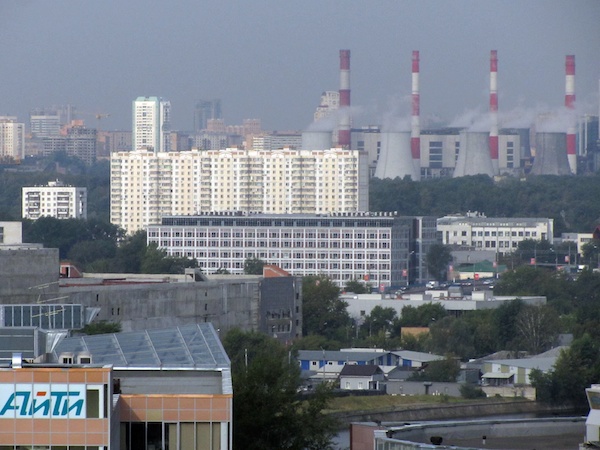
It was clearly time for a beer. The hotel’s barman seemed a bit surly at first, but thawed a little when we all had a laugh at a 10-year old Chinese boy who came in to try to buy beer ‘for his brother’. Later in the evening, we discovered that the barman works 12 hour shifts every night from 9pm, so he was just a bit tired.
We were feeling a little jet-lagged ourselves next morning, but soon perked up after a pleasant breakfast before meeting our guide, Diane. She showed us how to use the metro (28 roubles to anywhere), and the three of us descended to the Green line, which was built during Moscow’s second wave of metro building, when Stalin declared that money was no object and that it had to be the best subway in the world. He got what he wanted; stations from this era are an amazing confection of echoing marble halls with high vaulted ceilings.
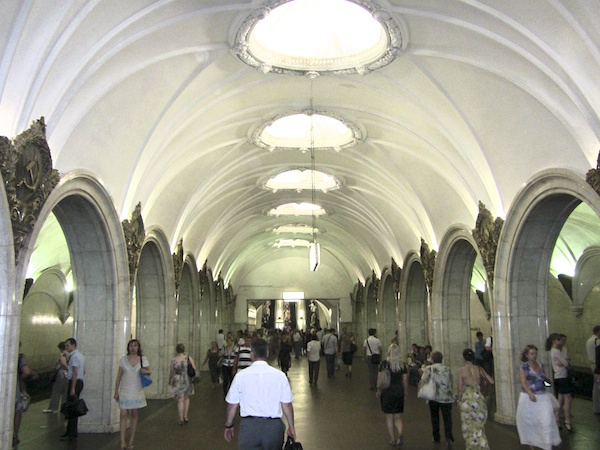
Three stops later, we were in the heart of the theatre district, with its impressive collection of building in styles ranging from Classical to Romantic, and Soviet in the form of the former KGB headquarters.
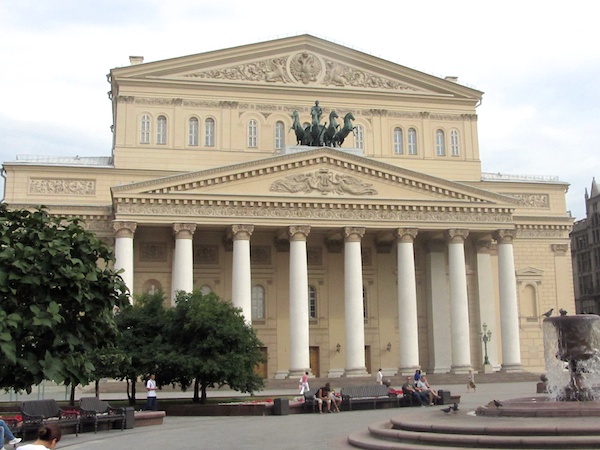
As we walked, Diane talked about growing up in Soviet communal housing, with three to five families sharing a kitchen and bathroom. She was ambivalent about perestroika, when each family was assigned a new flat just for themselves, which was theirs to own and do what they want with. Although she could see that this put Russians on the same footing as other Europeans, she mourned the loss of the social aspect of shared housing, where everybody looked after one another. This concept of universal flat ownership kick-started the fledgling capitalist economy, and the city has a feeling of general wealth and integration. The city is clean and well-kept, and the populace seemed dynamic and well-off, particularly the women wearing expensive and sexy European fashions. We looked for echoes of the Soviet era but only noticed the security guards in booths on every escalator, and the very large number of workers that seemed to be necessary to perform the more menial jobs.
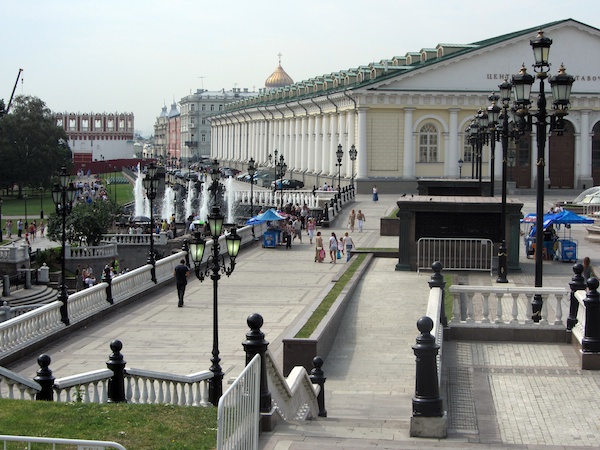
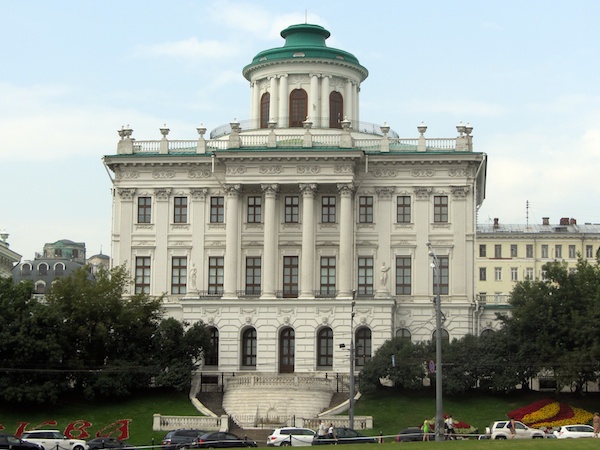
Some of the buildings that we’ve see, such as the lovely little pink and white cathedral on Red Square, are recent copies of historic buildings that were blown up in the Soviet era to make way for more suitable projects. There is a heart-breaking photograph of the fabulous Cathedral of Christ the Saviour being demolished to make way for a half-kilometre high brutalist memorial topped by an eighty-metre statue of Stalin. While the deep foundations were being dug, war broke out and work was halted. The hole was used as a swimming pool until finally a copy of the original cathedral was built by public subscription.
The monument’s foundations were so deep that the architects added a second underground cathedral beneath the first, and then Moscow’s first underground car park beneath that.
Both cathedrals are liberally gilded inside and intricately decorated. Being Orthodox, there are no pews or seats inside, and the walls are ringed with icons. These are paintings of saints that are venerated, prostrated before, and kissed in the hope that the saint will mediate between you and god. Quite a few shawled elderly women were energetically throwing themselves at the feet of, and kissing, every saint in the enormous space. Cleaning these paintings must be a long job.
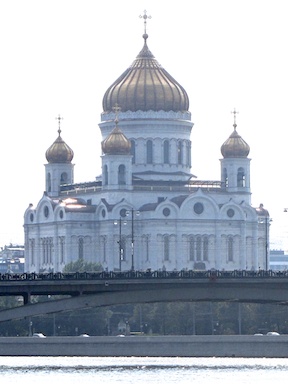
Cathedral of Christ the Saviour 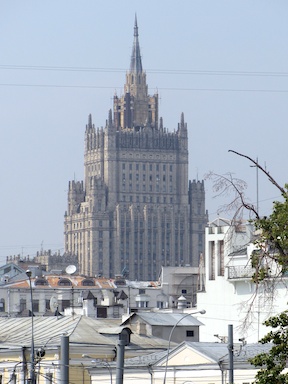
Ministry of Foreign Affairs (one of Stalin’s Seven)
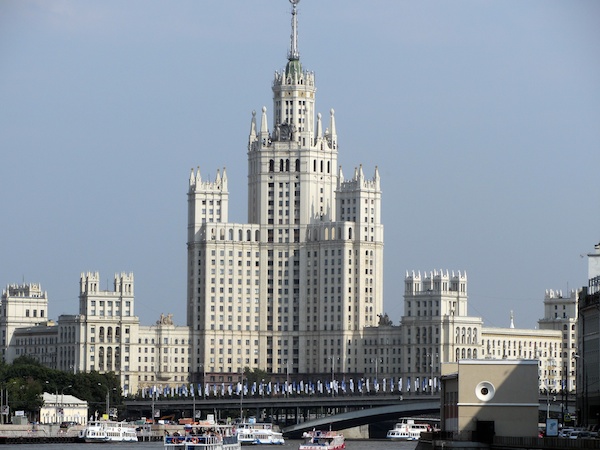
We said goodbye to Diane, ate a great lunch at a nearby Italian restaurant, and then went in search of the cheap river ferry that plies up and down the Moskva as part of the cheap Metro network. We couldn’t find the ferry, but instead a man in a naval uniform sold us a ticket on a tourist boat that cost ten times as much. We had no idea where the boat went, but it turned out to be a great way to see Moscow, and as a bonus it also had a small bar.
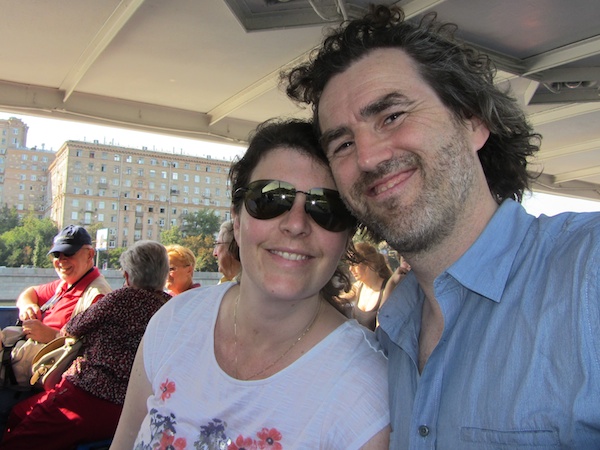
Once past the astonishing memorial to Peter the Great’s inauguration of the Russian navy, we passed blocks and blocks of Soviet-era communal housing, including one ‘luxury’ building (only one family per apartment) that had been built specifically to house artists and writers, who could then easily be spirited away in the night by the KGB. Diane had told us that if you saw your neighbours’ lights on after midnight, then you knew that you would never see them again.
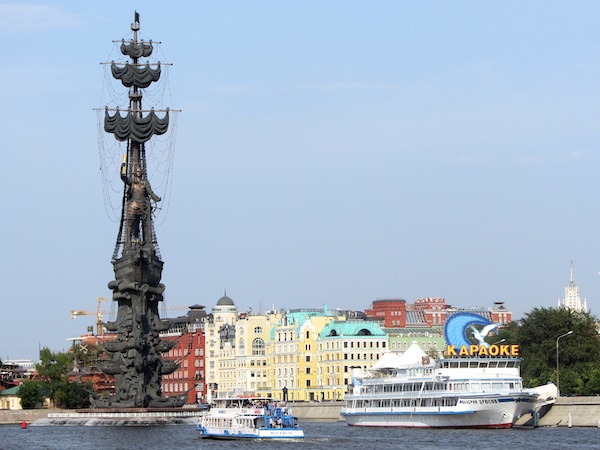
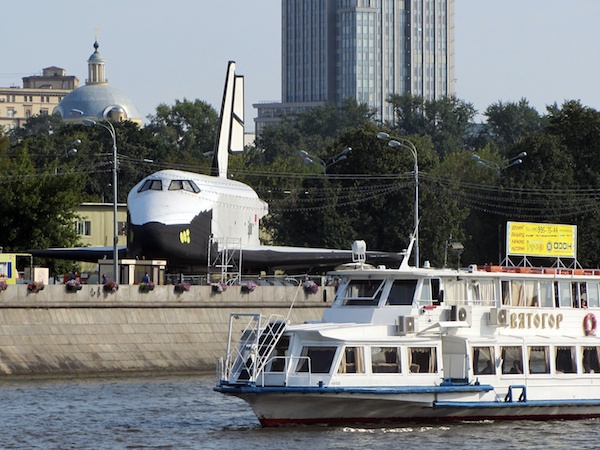
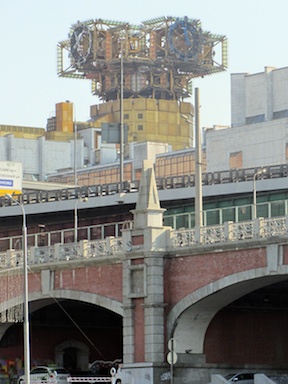
Interesting cooling towers on the GUGN 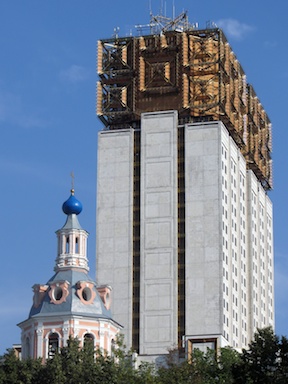
Universitet Gumanitarnykh Nauk (GUGN)
We still didn’t know where we were going, but all the other passengers disembarked at Kiev Metro station so we did the same and had an easy ride back to the hotel.
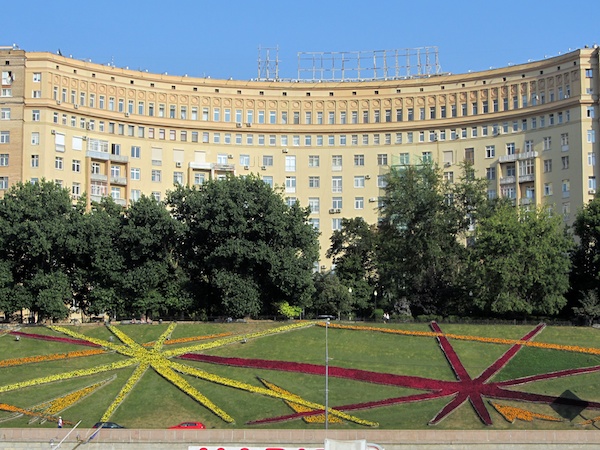
After a short nap, we headed out to a nearby Lebanese restaurant and dined on charcoal-grilled meat with pickled vegetables, washed down with Armenian wine, finishing up with a nice fruity shisha.
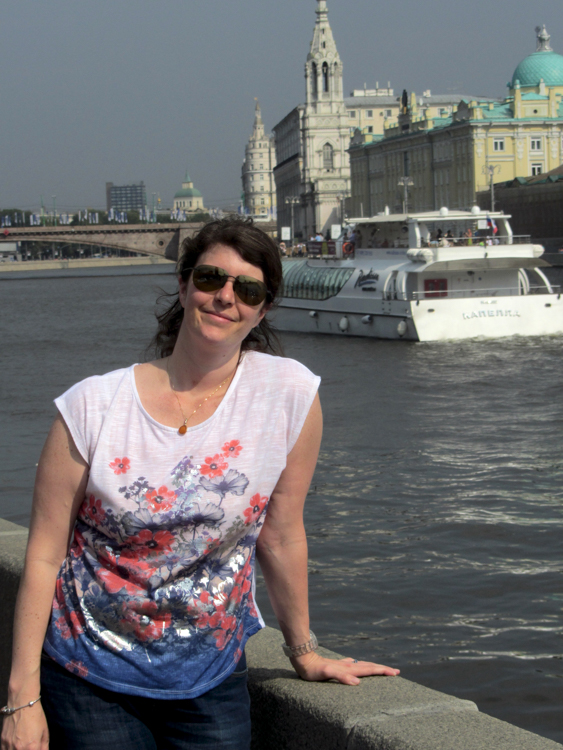
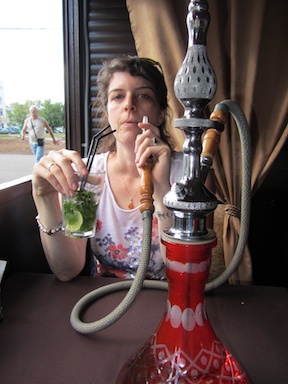
Ending the day with a perfect mohito and shisha
As everywhere in Moscow, the service was friendly and attentive and we had a great time, eventually stumbling back to the hotel in the small wee hours, ready for the next day’s sight-seeing. Tomorrow we were heading for the Kremlin.
Nice story about dodging bullets once again